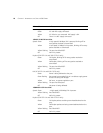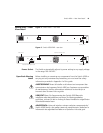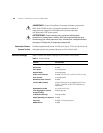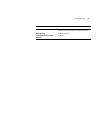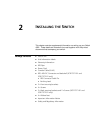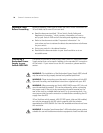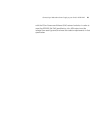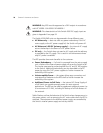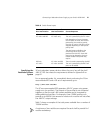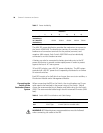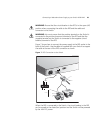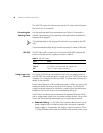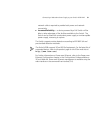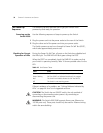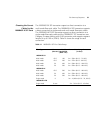
26 CHAPTER 2: INSTALLING THE SWITCH
WARNING: Any RPS must be approved as a SELV output in accordance
with IEC 60950-1/UL 60950-1/EN 60950-1.
WARNING: The characteristics of the Switch 4500 DC supply input are
given in Appendix B on page 91.
The Switch 4500 PWR units can be powered in three different ways:
■ AC Mains only — does not offer any power redundancy. If the AC
mains supply or the AC power supply fail, the Switch will power off.
■ AC Mains and -48V DC (primary supply) — the internal AC supply
acts as the backup in the event of a DC power failure.
■ DC only — the Switch does not need an AC supply and the resiliency
is provided by the DC supply. This is useful in an environment where
only DC power is available.
The RPS provides three main benefits to the customer:
■ Power Redundancy — if a Switch is powered from the mains supply
unit, a failure of the internal power supply will cause the Switch to fail.
This can be overcome by connecting both the AC and DC RPS supplies
to the Switch. Additional redundancy can also be added to the DC
power by using (N+1) DC power supplies to further increase the
availability of the system.
■ Uninterruptible Power — the system allows easy connection and
maintenance of batteries to the RPS shelf to further increase the
availability of the system.
■ Additional Power to PoE Ports — the internal AC Power Supply of
a PoE Switch can provide enough power for most network
applications. The RPS can be used to supplement additional power (up
to a maximum of 15.4W), including full backup of all PoE devices on
the network.
Table 6 below, outlines the behavior of the Switch when changes occur to
the power system, such as removing the AC mains cable when the RPS is
attached. The responses to the different power inputs are controlled by
the Switch’s internal power supply and not by the RPS.



